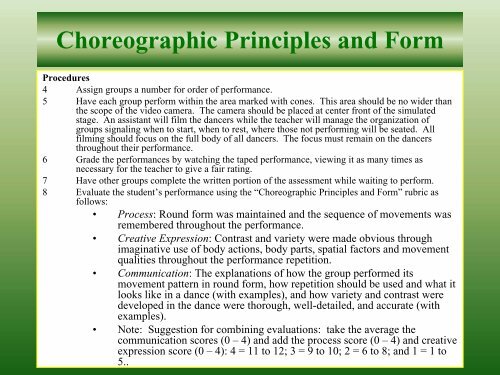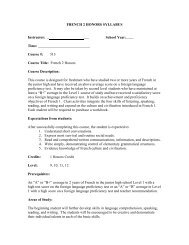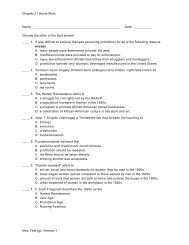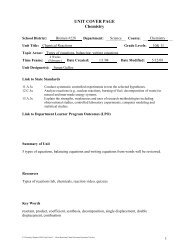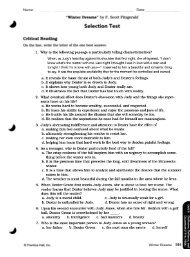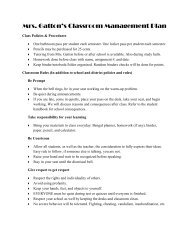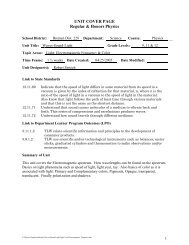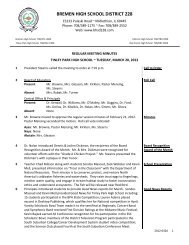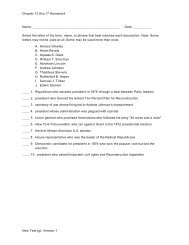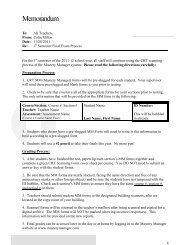Fine Arts Performance Descriptors and Classroom Assessments
Fine Arts Performance Descriptors and Classroom Assessments
Fine Arts Performance Descriptors and Classroom Assessments
Create successful ePaper yourself
Turn your PDF publications into a flip-book with our unique Google optimized e-Paper software.
Choreographic Principles <strong>and</strong> Form<br />
Procedures<br />
4 Assign groups a number for order of performance.<br />
5 Have each group perform within the area marked with cones. This area should be no wider than<br />
the scope of the video camera. The camera should be placed at center front of the simulated<br />
stage. An assistant will film the dancers while the teacher will manage the organization of<br />
groups signaling when to start, when to rest, where those not performing will be seated. All<br />
filming should focus on the full body of all dancers. The focus must remain on the dancers<br />
throughout their performance.<br />
6 Grade the performances by watching the taped performance, viewing it as many times as<br />
necessary for the teacher to give a fair rating.<br />
7 Have other groups complete the written portion of the assessment while waiting to perform.<br />
8 Evaluate the student’s performance using the “Choreographic Principles <strong>and</strong> Form” rubric as<br />
follows:<br />
• Process: Round form was maintained <strong>and</strong> the sequence of movements was<br />
remembered throughout the performance.<br />
• Creative Expression: Contrast <strong>and</strong> variety were made obvious through<br />
imaginative use of body actions, body parts, spatial factors <strong>and</strong> movement<br />
qualities throughout the performance repetition.<br />
• Communication: The explanations of how the group performed its<br />
movement pattern in round form, how repetition should be used <strong>and</strong> what it<br />
looks like in a dance (with examples), <strong>and</strong> how variety <strong>and</strong> contrast were<br />
developed in the dance were thorough, well-detailed, <strong>and</strong> accurate (with<br />
examples).<br />
• Note: Suggestion for combining evaluations: take the average the<br />
communication scores (0 – 4) <strong>and</strong> add the process score (0 – 4) <strong>and</strong> creative<br />
expression score (0 – 4): 4 = 11 to 12; 3 = 9 to 10; 2 = 6 to 8; <strong>and</strong> 1 = 1 to<br />
5..<br />
55


